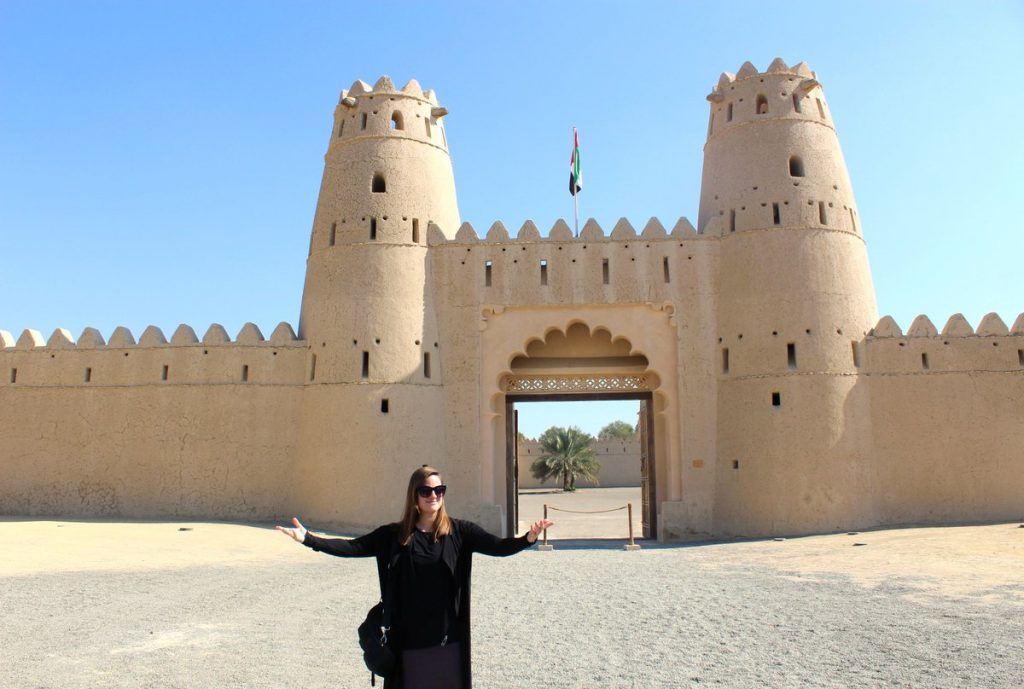
Welcome to Al Ain (Photo: Emily O’Dell)
In the desert I had found a freedom unattainable in civilization.
— Wilfred Thesiger
Just 24 hours before the week-end began, an American expat friend in Oman asked me if I wanted to drive with her to the United Arab Emirates to check out Dubai’s “Global Village” (like Epcot’s World Showcase on steroids) and the city of Al Ain. Since I haven’t spent much time time in the UAE, I said sure and looked online for hotels. After booking a room at the Hili Rayhaan by Rotana, I packed my bags and hopped in the car with her the next morning to drive from the Sultanate of Oman to the border crossing near Al Ain — one of only two currently open to expats.
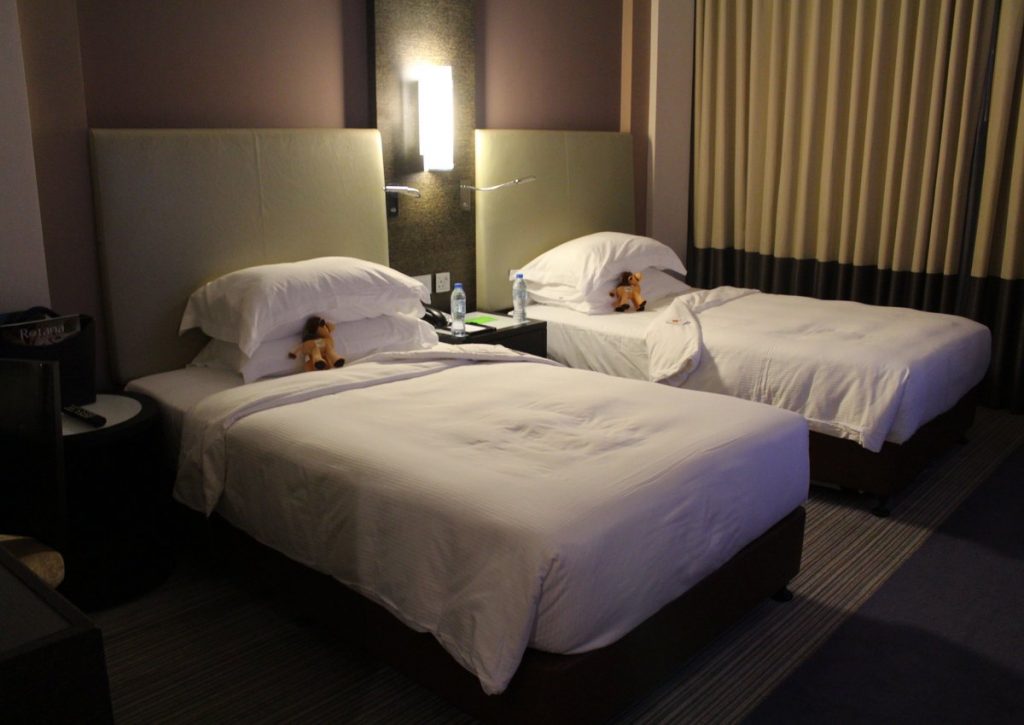
Hili Rayhaan by Rotana (Photo: Emily O’Dell)
At the border crossing, we got our retinas scanned and passports stamped in under ten minutes before we journeyed onwards to Global Village in Dubai — where we shopped in each country’s pavilion for local goods (porcelain whirling dervishes from Turkey, Moroccan lamps, and Yemeni honey). I enjoyed it much more than I thought I would — the shopping was impressive but most of all I enjoyed speaking in Arabic with merchants from all over the region (and I even picked up some new Amazigh words). The trick is to get there early to avoid the large crowds.
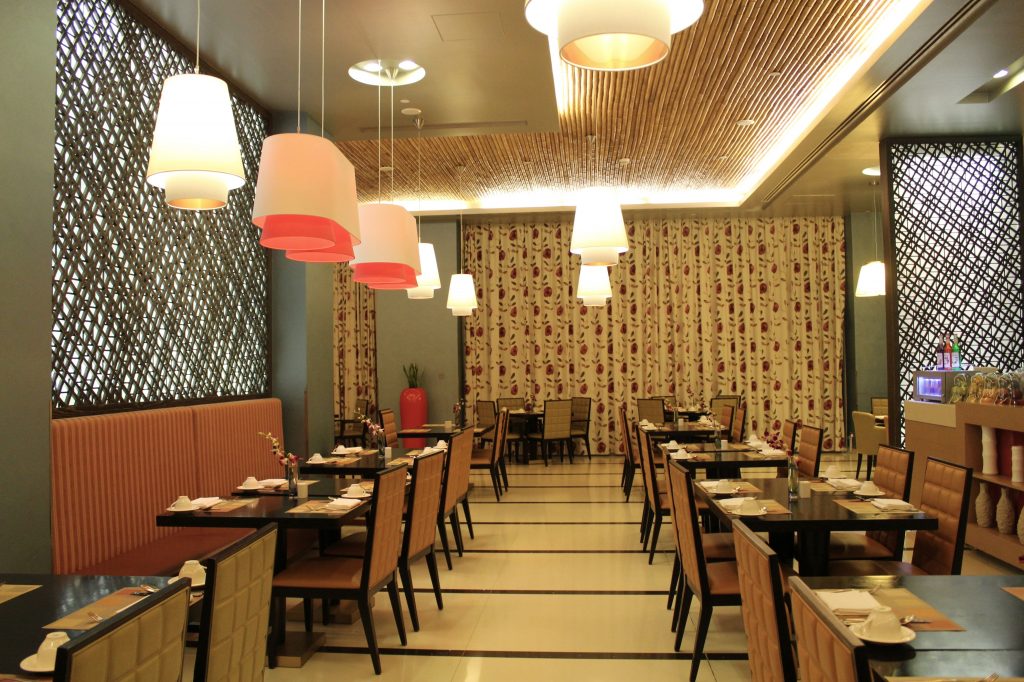
Dining room of Hili Rayhaan by Rotana (Photo: Emily O’Dell)
After driving from Dubai to Al Ain, we were exhausted from a long day on the road driving across the Arabian peninsula. So we were delighted to finally reach the charming dining room of our hotel — Hili Rayhaan by Rotana — to enjoy a big feast for dinner. As luck would have it, we arrived on “Arabian buffet” night, and we were pleased to encounter some creative sushi fusion surprises.
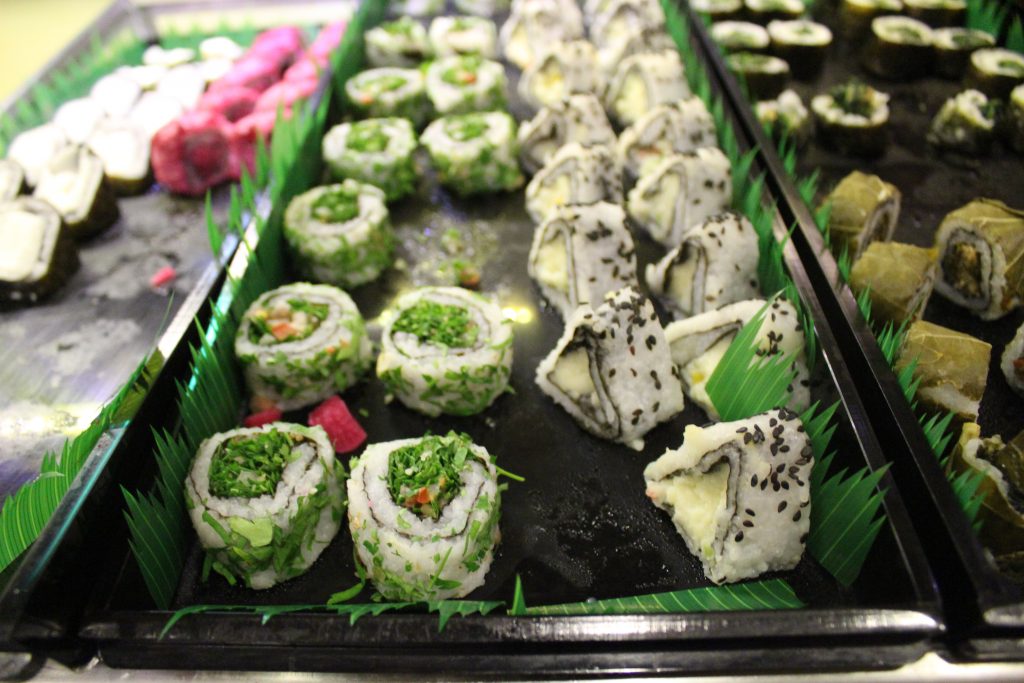
“Arabian” sushi (Photo: Emily O’Dell
I cannot even begin to tell you how excited I was when I found all kinds of “Arabian” sushi displayed as part of the buffet. I have worked in the Middle East for two decades, and lived in the Middle East consecutively for six years, so I was thrilled to encounter this playful new culinary delight. “Arabian sushi” — whoever thought of that deserves an award! When we finally got to our room to unwind and sleep, we were greeted by a pair of stuffed camel toys on our pillows — a sweet local touch.

Dolma sushi (Photo: Emily O’Dell)
Seriously, what could be cooler than “tabbouleh sushi?” It even kind of rhymes! In addition to the tabbouleh sushi, there was sushi stuffed with local cheese (delish!), and even dolma sushi — stuffed grape leaves (a staple of Middle Eastern cooking). I love sushi and I love Middle Eastern food, so I was in tastebud heaven. I ate as much of this “local” sushi as I could, since I knew it was likely I would never see this eclectic and unique sushi platter (east meets east!) again.
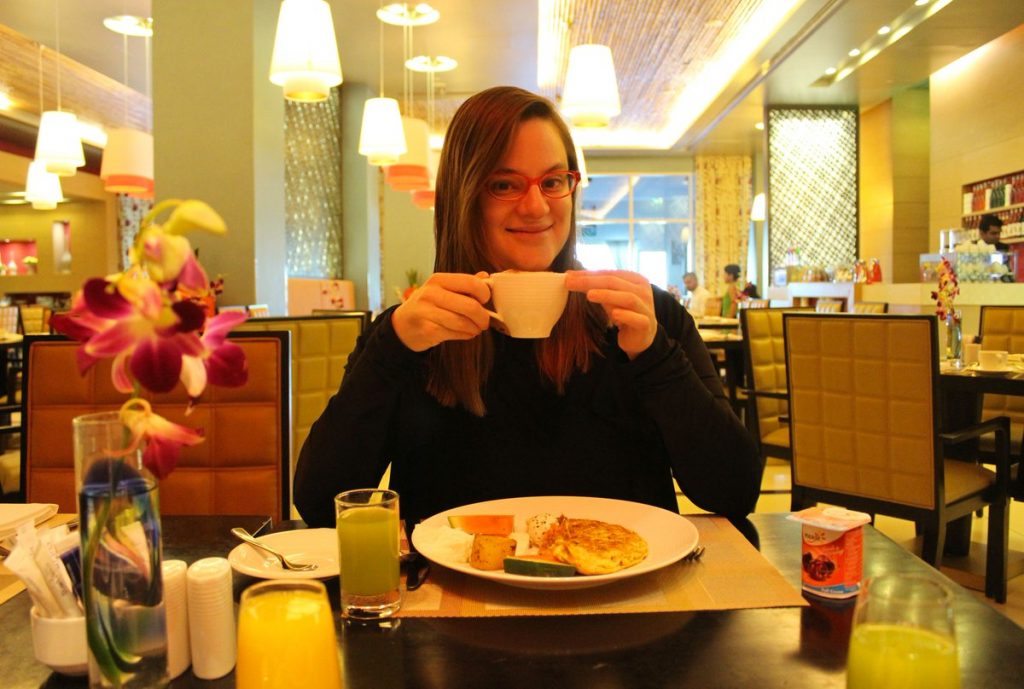
Waking up at Rotana (Photo: Emily O’Dell
After some much needed sleep, we rose well-rested the next morning and were happy to find that the breakfast spread was as satisfying as our dinner. A nice cappuccino, of course, was necessary to help push us out the door, as it was hard to leave the comforts of the hotel behind to explore the sites of Al Ain and then head home to Oman.

Al Jahili Fort
Nearby the hotel, we visited the impressive Al Jahili Fort — erected in the 19th century. Lucky for me, since I am interested in travel writing from the Middle East (being an intrepid traveler and writer myself), the fort contains a permanent exhibition of black and white photographs by the British traveller Wilfred Thesiger, entitled “Bin London and Freedom of the Desert.” Having lived in the same desert sands on the Arabian Peninsula as he once did, I read his words with a sense of strange kinship: “In those empty wastes I could find the peace that comes with solitude, and, among the Bedu, comradeship in a hostile world.”
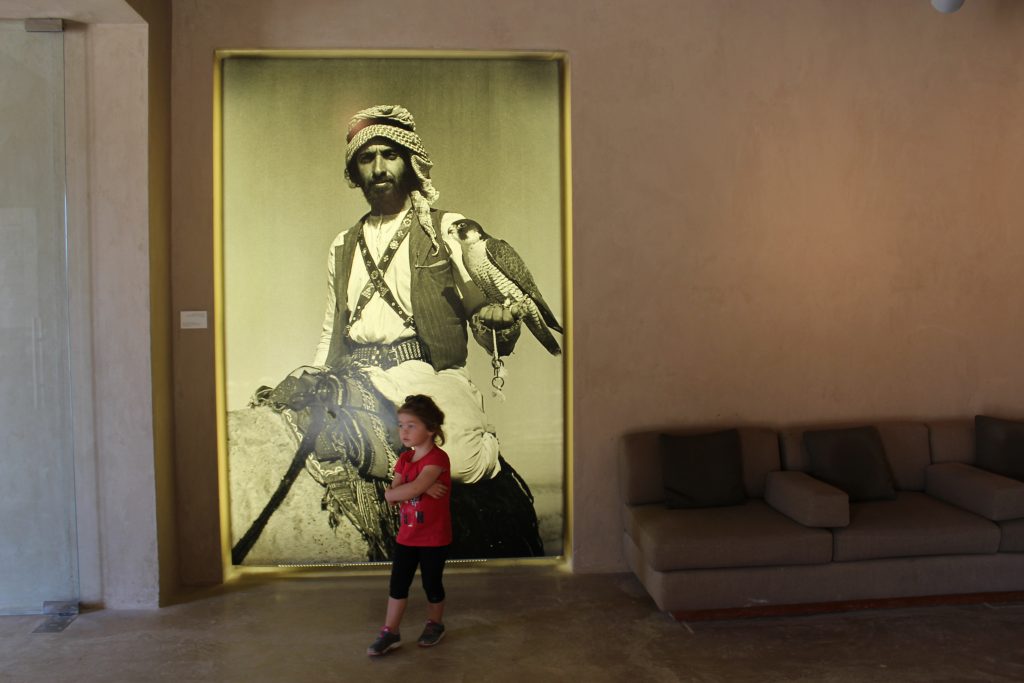
Permanent exhibit at Jahili Fort (Photo: Emily O’Dell)
Thesiger had come to “Arabia” to “find peace in the hardship of desert travel and company of desert peoples.” He lived with the Bedouin in the extreme environment of the desert and came to appreciate their skills, customs, and indigenous knowledge of the landscape and their beloved animals. As Thesiger wrote: “Here every man knew the individual tracks of his own camels, and some of them could remember the tracks of nearly every camel they had seen. They could tell at a glance from the depth of the footprints whether a camel was ridden or free, and whether it was in calf. By studying strange tracks they could tell the area from which the camel came.”
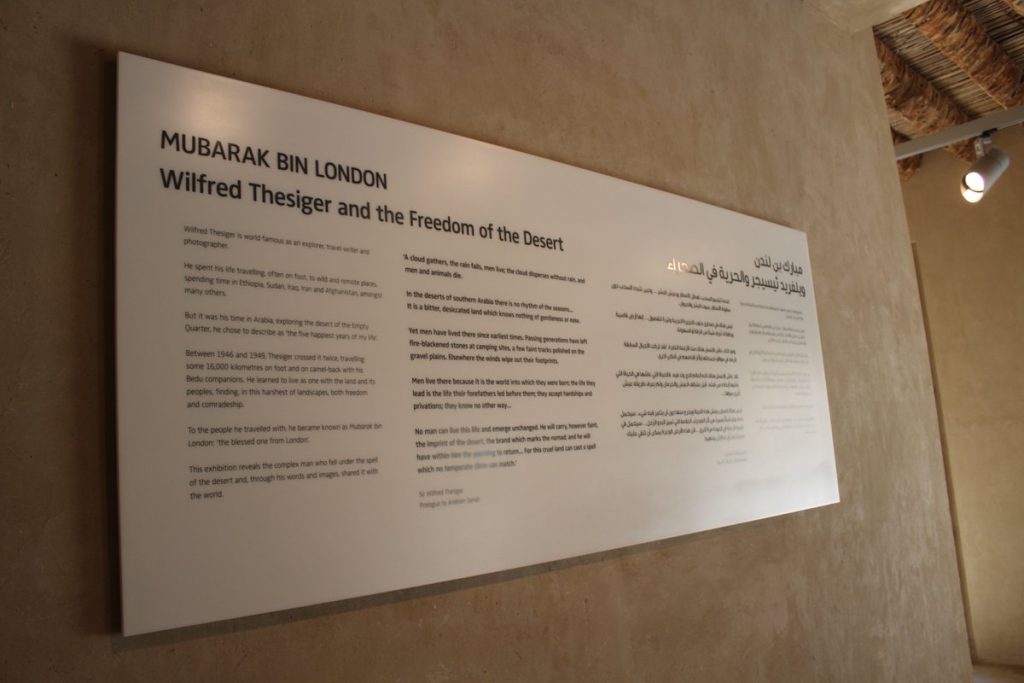
Permanent exhibit (Photo: Emily O’Dell)
Studying the old photographs depicting the harsh realities of Bedouin life in the desert, I was struck by how much in the United Arab Emirates had changed in the past several decades. While we were surrounded by the trappings of modernity in Al Ain, we were also pleased to be surrounded in some corners of the province by endless desert dunes. Always more at home in the desert sands than the skyscrapers of Dubai, I found myself daydreaming about moving to Al Ain and escaping on the week-ends to the dunes to live like Thesiger once did — without trappings of Orientalism, of course, just for some fresh air. On our drive back to the Sultanate Oman, I kept thinking of Thesiger’s words, and wondering if I too might have the chance one day to share all that I have seen in my twenty year travels as a solo traveler in the region: “The chill wind whispered among the shdowy dunes and fingered us through our clothes and through the blankets which we wrapped about us. They talked till long after the moon had set, of camels and grazing, of journeys across the Sands, of raids and blood feuds and of the strange places and people they had seen.”
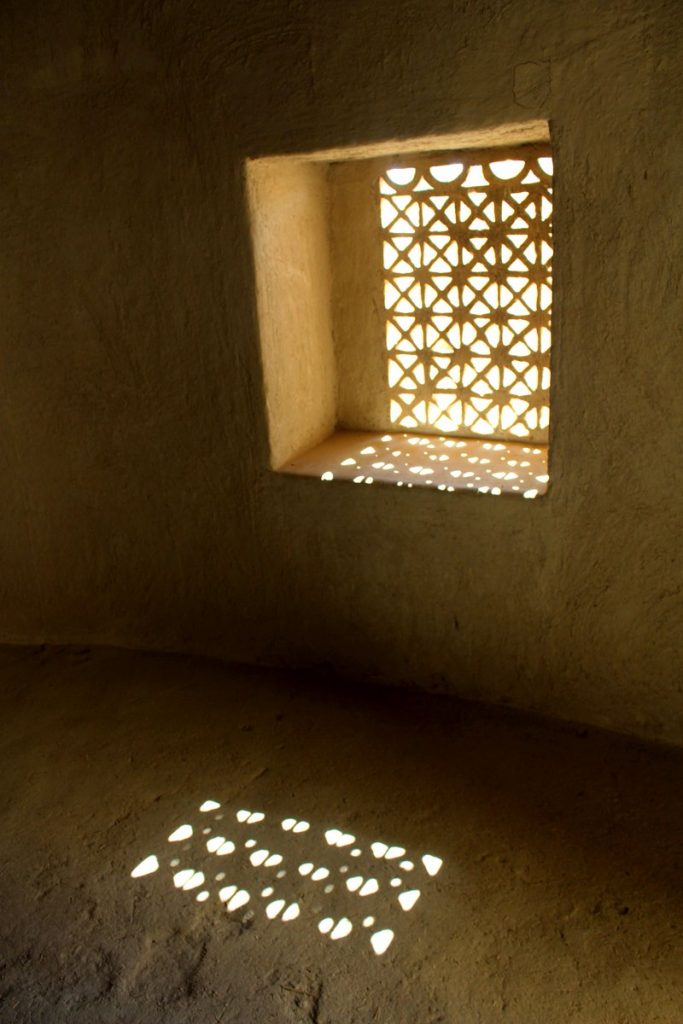
Al Jahili Fort (Photo: Emily O’Dell)